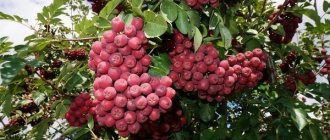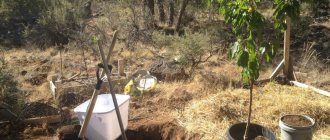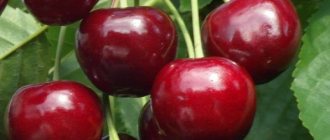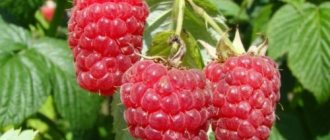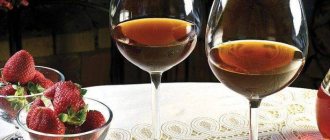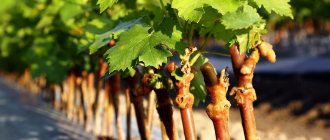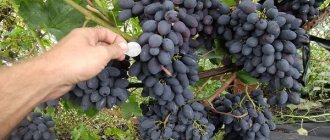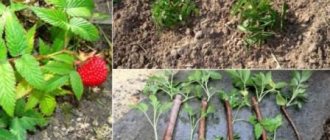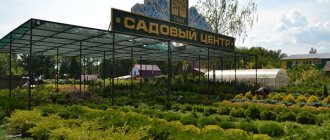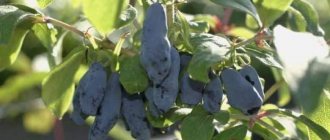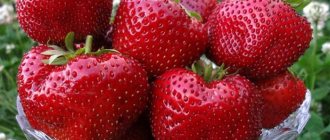There is not a single person who has not at least once tried these small red berries in his life, which tend to become tastier and sweeter after the first frost, and also decorate the tree with their fruit clusters throughout the winter period. Rowan nevezhinskaya is considered one of the most popular varieties. The most important and important advantage of this variety is that there is no bitterness in the berries of this rowan. They are much sweeter than the mountain ash that grows in forests. But this does not mean that this tree no longer has advantages. Let's take a closer look at this subspecies and find out all the advantages of this tree.
Diseases and pests
Rowan plant is quite resistant to diseases.
The only disease that affects rowan is rust. Yellow-brown spots appear on the outside of the foliage, and growths containing spores of rust fungus form on the inside surface. Spraying with Bordeaux mixture or copper sulfate will help get rid of the fungus. Rowan can also be affected by various fungi, causing leaf spots. Regardless of the type of spotting, old leaves are collected and destroyed, and the tree is sprayed with 1% Bordeaux mixture.
The most common pests of rowan:
- rowan moth;
- red-winged hawthorn elephant;
- rowan mite.
Pests live throughout the winter in the surface layer of soil. During the active growing season, foliage and fruits are damaged. If you loosen the soil in time in the spring, all pests will die. For the purpose of prevention and protection against pests, the most common lime is also used. It is used to whiten the lower part of the trunk.
Aftercare
Despite the fact that Nevezhinsky rowan is unpretentious, it still needs at least minimal care. Therefore, it is useful for gardeners to pay attention to several practical recommendations:
- Watering is required only during periods of prolonged drought, especially when caring for young seedlings. The volume is determined depending on the age of the tree - from one to several standard buckets (10 l).
- Fertilize once every 2-3 years: dig a furrow 4-5 cm deep along the diameter of the crown and add manure, inorganic fertilizers or compost, and then bury it with soil.
- For proper care, timely pruning of Nevezhin rowan is also necessary. In early spring, it is advisable to remove all branches, retreating 10 cm downwards from the highest bud. If you want to get not a classic tree, but a bush, you need to prune the seedling already in the first season. Pruning is done on top of the third bud so that as a result 3 shoots diverge.
- Preparation for winter: you don’t need any special shelter for Nevezhinsky mountain ash. But it is advisable to wrap the trunk with burlap or other materials, since in early spring snow can overheat the bark due to reflected sunlight.
- If there are a lot of rodents in the area, the lower part of the trunk should be covered with spruce branches, spunbond, old nylon tights, birch bark, roofing felt or other material. If it does not “breathe,” the covering should be removed during hot weather to make the tree comfortable.
To protect against rodents, the lower part of the trunk is wrapped in mesh or other material, which is buried in the ground (the edges must be firmly connected)
Why Nevezhinsky rowan does not bear fruit and what to do
This unpleasant phenomenon may have 2 main reasons:
- There are no trees of other varieties on the site. Since Nevezhinskaya is self-sterile, it needs pollination by other mountain ash.
- If the plant grows in the shade, it will also stop bearing fruit.
The soil itself also plays a certain role - if it is too poor, the rowan will grow worse. At the same time, it will still bear fruit, but not in such quantities.
Planting on the site and care
Planting rowan is not a difficult task. The plant is unpretentious and tolerates severe frosts well. The only difficulty in growing is that the bright red-orange berries attract many birds that winter in our area, so you will have to scare away or drive away the birds yourself.
You can buy planting material or get it from an adult plant. To get a sprout from an adult specimen, one branch is bent in the fall or spring. After this, it is fixed and dug in.
After a year, the young shrub should be disconnected from the mother plant and grown in the same place for another 12 months. Then the transplant can be carried out.
Rowan pollination occurs in a cross way. Nevezhinskaya is a self-fertile plant that needs a pollinator neighbor. Common mountain ash can be an excellent pollinator.
It is recommended to plant 3 varieties of Nevezhinsky mountain ash at once in order to significantly increase its productivity. It is important to remember that planting rowan seeds can give a result inversely proportional to the expected one. Trees grown from seeds do not inherit the qualities of the mother tree.
Varieties
There are several varieties of Nevezhin rowan.
- The most common is cubic . The variety got its name because of the shape of the berries: they have five sides, elongated in length. The berries are red with an orange tint, they have juicy pulp with a pleasant sweet and sour taste. Inside the berries are small brown seeds.
- Yellow is not as common as cube. The variety is so called because its berries are orange-yellow. They are slightly larger than the previous variety and slightly inferior in juiciness, but they also have a sweet and sour taste and a ribbed surface.
- The sweetest rowan is Nevezhinsky red. Its berries are larger than those of the cube and yellow ones. Their color is red, very bright. The fruits have a more rounded shape and juicy pulp.
Diseases suffered by rowan nevezhinskaya
Among the most common diseases of this tree are anthracnose, powdery mildew, rust, moniliosis, and leaf spot.
The most famous and common problem with rowan is rust, which can cause quite serious harm to the tree. It affects foliage and manifests itself as the formation of orange-yellow spots on the outside of the leaves. Most often, rust attacks this tree in cases where rowan grows close to juniper, since this plant is the site of one of the stages of development of this disease.
To combat this disease, it is necessary to fence the tree away from the juniper plant, if present, cut off the infected stems and treat with one percent Bordeaux mixture, up to three times in one season. Treatment should begin in the month of May, and subsequent treatments should be done at intervals of approximately 25 days.
The cause of leaf spot is various types of fungi, which is why the signs of its presence tend to differ from each other. In one case, small spots of brown or ash-gray with a dark edging may appear. To combat it, regardless of what exactly the disease originated from, it is necessary to collect all the old and affected foliage and dispose of it by burning, and then treat the rowan with one percent Bordeaux mixture.
Fruit rot, or otherwise moniliosis, is very dangerous during periods of prolonged rain and low temperature conditions. The manifestation of the disease is difficult to miss - the shoots and foliage begin to become covered with a brownish-brown tint and dry out, outwardly it looks like a severe burn. With this disease, the fruits begin to rot directly on the tree itself and become covered with numerous lumps of a creamy-white hue.
In dry, warm weather, the development of the disease is slowed down, but does not go away, returning with the first rains. To combat it, a remedy such as Hom is used. One percent liquid of Bordeaux can also fight the disease quite well.
We suggest you familiarize yourself with: Caring for irises in autumn, fertilizing
Powdery mildew disease very often affects new shoots and foliage of rowan. Initially, it manifests itself as the appearance of a whitish coating, which subsequently becomes coarser and dark-colored spots form. The spread of the disease occurs much more rapidly in humid and warm weather.
In order to stop the spread of infection, it is necessary to collect all the fallen leaves and burn them, and during the growing season, dusting is done with a special mixture consisting of lime and ground sulfur, in a ratio of one to two. Moreover, one square meter can take approximately 0.3 grams of such a mixture.
Another common disease of rowan is anthracnose. It manifests itself as the formation of dark brown spots on the fruits, on which there are controversial pads with fungus. If these diseases affect the fruits, they must be immediately removed and disposed of by burning, and then the rowan must be sprayed with a universal remedy for fungal diseases, which is one percent Bordeaux mixture.
Rowan pruning: annual pruning
The most common scheme for pruning rowan
To ensure the healthy development of a tree with abundant fruiting, rowan is pruned every year. Pruning, carried out according to all the rules, eliminates unwanted young shoots and old branches that impede the development of the tree, or simply do not bear fruit. Thinning young plants gives the desired shape and stimulates the germination of new strong shoots. It is recommended to divide rowan pruning into two stages:
- cutting before wintering;
- pruning during the growing season.
Nevezhinskaya rowan: beneficial properties
What are the benefits of Nevezhin rowan? The berries of Nevezhin rowan contain a huge amount of various microelements and vitamins. Let's consider an example: the presence of vitamin P in a lemon, orange, or apple is ten times less than in these berries.
The apple also lags five times behind the amount of vitamin C from the fruits of this tree. And with the best vitamin A content, carrots and rose hips, rowan berries compete quite successfully. Plus, they contain a large amount of vitamins E, B, B2, PP. Therefore, you should not even try to argue about the benefits of these fruits.
In general, these berries contain the following vitamins: PP, A, B1, B2, B9, C, E, Beta-carotene. Macroelements: calcium, phosphorus, potassium, magnesium. Microelements: manganese, zinc, iron, copper. These fruits also contain pectin and fiber - substances that allow toxic elements and radionuclides to be removed from the body.
There is phytoncide in the foliage of rowan and in its bark; this is the primary reason for the wonderful proximity of this tree to potatoes, since for it it is a good protection against late blight. Very often, potato crops left for storage are sprinkled with the leaves of this tree.
But here’s what’s interesting: if you cut off rowan branches and immediately put them in a jar containing swamp water. After about three hours, the liquid surprisingly becomes completely usable.
How to grow and care
Although Nevezhinsky rowan is not the most capricious plant, it still needs to be taken care of and properly looked after. Since this is a frost-resistant tree, it can be planted in places where it will protect other plants that are more in need of warmth from the cold wind.
It is better to purchase planting material from well-established manufacturers. Experts will select seedlings and give useful advice on planting and care. High-quality seedlings are not damaged, there are no dry branches or signs of disease. If the seedlings have open roots, then there should be no areas of rot on them.
Due to self-sterility, several trees need to be planted, but if you want to have rowan in a very small area, you can graft several varieties onto one tree.
Planting can be done both in the fall, 2-3 weeks before frost, and in the spring, before the buds swell. For spring planting, the hole should be prepared in the fall. Its dimensions are approximately a meter in diameter and 60-70 cm in depth. A layer of nutrient mixture is placed at the bottom of the hole. After placing the seedlings in the holes, they need to be sprinkled with soil.
In this case, the root collars are located at the level of the soil surface or are buried 2-5 cm. Planted trees need to be watered abundantly and mulched with peat, humus or sawdust.
You can also grow rowan using seeds, grafting to other trees, or layering. Whatever method you choose to get a good harvest, trees need to be cared for. First of all, you need to periodically loosen the soil around them, starting in early spring.
The first couple of years the ground needs to be dug up with the addition of humus. Subsequently, fertilizing is carried out three times a year:
- in early spring - humus and ammonium nitrate;
- at the beginning of summer - mullein infusion;
- at the end of summer - ash and superphosphate.
Since the root system is not located too deep, but spreads parallel to the surface, the trees absorb fertilizer well. You also need to do pruning. The first time this should be done 4-5 years after planting - by this time the crown will have already formed. The procedure includes removing all broken and damaged branches, as well as shortening side shoots; You can also shorten the barrel a little.
Due to its frost resistance, special winter shelter is not required. This wonderful tree is less susceptible to diseases than other fruit and berry crops; pests also do not cause much harm to it, and since they gather in the upper layers of the soil for the winter, it is easy to get rid of them in the fall when digging.
Honor and respect
In Ancient Rus', mountain ash always grew in every garden - as a symbol of happiness and peace in the family. One of the Christian holidays, the day of Peter and Paul Ryabinnikov, is also dedicated to this culture. Many agricultural signs have long been associated with rowan: when it blooms, it’s time to sow flax; when it blooms well, it means a rich flax harvest; when it blooms late, it means a long autumn... Rowan has always been held in high esteem.
Its branches were used to decorate the home, and the powder from the dried fruit was added to flour. Berries boiled in honey, soaked or dried were served among other dishes. “I think you will be surprised to learn that rowan is a relative of the rose, they belong to the same family Rosaceae,” says Lyudmila Murashkevich, junior researcher at the department of berry crops of the Republican Unitary Enterprise “Institute of Fruit Growing.”
“Ivan Vladimirovich Michurin was the first to look at the ordinary rowan tree. By crossing it with various plants, he developed new varieties. “Burka” is a hybrid with alpine rowan, “pomegranate” - with blood-red hawthorn, “liqueur” - with chokeberry. Later, breeders experimented with medlar, apple and even pear trees.
Thus, the varieties “scarlet large” and “beauty” were obtained from crossing Moravian rowan and a mixture of pear pollen. There are about 90 species of rowan in the world flora, but only 14 have been introduced into cultivation. And the most common is the common rowan. Sweet-fruited forms of rowan, such as Moravian, sweet-fruited, Nevezhinskaya, large-fruited, or domestic, have also been cultivated.
We suggest you read How to plant roses with seeds from China
Pruning a mature tree
Maximum effect after pruning in summer.
Pruning old mountain ash that is older than 5 years can be more intense. In such trees it is necessary to cut out the side branches, rejuvenating the tree. Young shoots bear fruit better and are more resistant to frost, pests and diseases. The rejuvenation procedure is recommended to be carried out once every two years.
Shortening the old tree branches stimulates the production of a large number of new shoots. For this purpose, old branches are shortened by about 1-1.5 meters. 1/3 of all old branches are pruned so as not to weaken the fruiting of the rowan.
When pruning old mountain ash, branches that are more than 4 years old must be completely removed. Only young branches and annual shoots remain on the tree. All old branches are removed with the exception of the central trunk. Old side branches are cut off at a distance of several centimeters from the trunk. All these manipulations will stimulate the growth and development of young shoots, which in turn will delight you with a rich harvest.
Application of the berry
Nevezhinskaya rowan is a storehouse of useful vitamins and minerals. Its healing properties have been used for many years. The content of nutrients in the leafy part of the plant is even greater than in the fruit part. Carotenoids, organic acids, antioxidants have a positive effect on the general condition of the body and increase its immunity. Rowan fruits are used on an industrial scale for the production of food coloring.
If your blood pressure rises or you have dysentery, your metabolism is disturbed, or complications arise from diabetes, use a natural first aid kit and make yourself juice or tea from rowan berries.
Berry decoction also helps to effectively relieve swelling, improves the condition of the skin, hair and nails. Rowan fruits help stop bleeding.
At home, rowan berries are often used to make jam, jam, marshmallows, wine, tinctures, sweet molasses and much more.
Stages of cutting rowan
Young mountain ash stretches upward strongly, using resources for growth rather than fruiting. Therefore, young trees are limited in their growth by crown formation. Dead and damaged branches that intersect and grow towards the trunk are cut out from all trees. Particular attention is paid to trees older than four years.
Table 1. Stages of cutting old mountain ash
| Stage | Principles |
| Pruning large branches | The work begins by cutting out the thickest branches of the crown to ensure good penetration of sunlight into the tree. Sometimes it is necessary to remove the entire upper part of the rowan crown to reduce its height. Low trees are easier to process and protect from diseases and pests, convenient to harvest and care for them |
| Cutting small branches | After the first stage, branches that intersect, burst, shade and grow close to each other or inside the crown are pruned. Such pruning is not dangerous and does not harm the tree, and after the appearance of new leaves and active growth in the summer months, the rowan quickly becomes quite lush |
Reproduction
To propagate Nevezhin rowan, do not use the seed method, which does not impart the sweet taste of its berries. Only the vegetative method is suitable for propagation, for example, by grafting or budding. Rowan rootstock grafted using budding shows good survival rate and fusion with the rootstock.
Advice! Budding is carried out in the first half of August.
In turn, chokeberry, shadberry or pear can be grafted onto varietal rowan. But this will reduce the longevity of the culture.
Cutting young rowan
Over the next four years after precipitation, young mountain ash is pruned very sparingly, shaping the crown of the tree and cutting through it from excessive density. To do this, after the harvest is harvested, cut out:
- old branches;
- young shoots lowered to the ground;
- branches growing into the center of the tree;
- shoots that can compete with the central trunk;
- damaged branches;
- branches with disease symptoms.
For normal development of rowan, on average, it is enough to reduce about 1/5 of all shoots. Sometimes, secondary vertical shoots develop faster than the central trunk, in which case they can be left for replacement in subsequent years.
Rowan nevezhinskaya, planting and care
Nevezhinskaya rowan is a variety of ordinary rowan. Outwardly, they are not much different from each other. In a nursery, only an experienced specialist can distinguish wild mountain ash from non-Vezhin mountain ash. Common rowan is a tree with complex, odd-pinnate leaves and characteristic dense corymbose inflorescences.
The fruits of the common rowan become edible after the first frost. They contain 5-8% sugar, 1.63-2.74% malic acid, a significant amount of provitamin A (carotene) and vitamin C. The fruits of Nevezhin rowan are devoid of bitterness and astringency even in an unripe state. They are much larger than ordinary ones, contain sugar - from 8 to 10.5%, malic acid - 1.5-2.5%, pectin - from 0.3 to 0.6% and up to 0.3% tannins .
The fruits of Nevezhin rowan contain up to 150 mg of vitamin C and 10-12 mg% carotene. In terms of vitamin content, it can be compared with lemon and black currant. In addition, Nevezhinsky rowan, like ordinary rowan, has phytoncidal properties. It has been noticed that potatoes planted next to mountain ash are not affected by late blight.
As a fruit crop, rowan was not included in the assortment of our gardens before the work of I.V. Michurin, but as an ornamental plant it was always near human habitation, which is why so many songs, proverbs and riddles were written about it.
The history of the origin of the Nevezhin rowan can be judged from the works of the scientist Dubensky, famous in Vladimir in the 50-70s of the last century, who indicated that the sweet-fruited rowan was found in the Andreevsky forest (a forest near the village of Nevezhino, Yuryev - Polsky district) by the peasant Shchelkunov and planted them on their estate.
Fellow villagers bred it in their gardens. Its main breeder in the village of Nevezhino and throughout the Vladimir district was Alexander Mitrofanov, who annually grew seedlings for sale. A big role in the spread of the Nevezhin rowan was played by shepherds who went for the summer season from their native village of Nevezhino to neighboring regions - Ivanovo, Yaroslavl, Moscow, Ryazan - and spread the glory and seedlings of the Nevezhin rowan. So gradually it entered the gardens of the central regions of Russia as a fruit crop.
Due to its unpretentiousness, high frost resistance and winter hardiness, rowan has become an insurance fruit crop in the gardens of the central zone of the Non-Black Earth Region. Even in the harsh and snowless winter of 1938/39, when the soil temperature at a depth of 40 cm dropped to minus 14°, freezing of the roots of the Nevezhin rowan was not noticed.
And in the winter of 1940, when frosts in the Vladimir region reached minus 46° and all the fruit trees were severely damaged, the mountain ash overwintered well and produced a harvest. And rowan can produce a considerable harvest. With good care, trees aged 30-40 years produce 80-100 kg of fruit. But in order to obtain such yields, certain conditions must be created for this crop.
We invite you to familiarize yourself with the Artificial pond in the garden
Nevezhinsky rowan is unpretentious to heat. Tolerates frosts well. In spring it blooms a week earlier than the apple tree. Flowers tolerate frosts down to minus 2.5° (apple flowers are damaged at temperatures of minus 1.5°). But this culture is very light-loving. If the trees are well lit, then the crown from pyramidal at a young age becomes rounded at the time of fruiting and is capable of bearing a large harvest.
If you plant rowan in a dense planting area, it will reach towards the light. All branches inside the crown will die off, and the harvest will consist of individual tassels located along the periphery of the crown. This rowan requirement for light must be taken into account when planting it in the garden. Rowan roots are located shallow from the soil surface, so this crop is demanding of moisture, but at the same time, the groundwater level should not be lower than two meters.
The best soils for planting rowan are light and medium loams.
Planting time: in spring - before the buds swell, in autumn - 2-3 weeks before the onset of stable frosts, in late September - early October.
In most gardens and summer cottages, rowan is planted along the edges of the plot, where it receives a sufficient amount of light and, as a crop that is less demanding on climatic conditions, serves as a protection for other fruit crops from adverse weather influences.
The soil content under rowan trees is the same as for other fruit crops, and since the roots of rowan are located very close to the soil surface, the cultivation of the trunk circles must be carried out carefully. On loamy soils that retain moisture well, and with watering in dry years, grass formation is possible.
With such a system, it is necessary to gradually cultivate the soil. It's done like this. 2 years after planting, a ditch 50 cm deep and 20-25 cm wide is dug around the tree. The diameter of this ring is up to 1 m. 3-4 buckets of rotted manure are placed at the bottom, mixed with the topsoil and covered. After another 2 years, a ditch of a larger diameter is again dug (along the periphery of the crown) and manure is added, etc.
Description
Nevezhinsky rowan is a deciduous fruit tree that grows up to 10 meters in height. It is called Nevezhinskaya after the name of a village in the Vladimir region, where it began to be cultivated as a garden crop more than 100 years ago. This beautiful tree lives and bears fruit for 30 years. You can meet it in Europe, almost throughout central Russia, in some Asian countries and in the North.
The plant has a very interesting crown, which can take different shapes: in a sunny open place - spherical, in a shaded area - pyramidal. The leaves of the tree can be up to 20 cm long; they are called imparipinnate, as they consist of 7-15 elongated leaflets with jagged edges. The upper part of the leaf is dark green, the lower part is lighter, velvety to the touch. The color of the bark differs from the color of the common rowan - the Nevezhinskaya bark has a more pronounced brown tint, it has a smooth structure. This type of rowan grows well on any soil, although loamy soils are considered the best, and not the most suitable ones - acidic, clayey, sandy, swampy. The tree has a powerful root system, but it does not go deep, but is located parallel to the surface of the earth.
During the flowering period, which occurs in the second half of May or the first ten days of June, the tree is covered with inflorescences of creamy-white flowers, the diameter of the inflorescences is on average 10 cm. The flowers have a pronounced specific aroma.
Frosts that occur during this period, which are destructive for apple trees, will not cause any harm to the flowers, and the yield of rowan is usually good - one adult tree can produce up to 40 kg of berries. The trees begin to bear fruit in the 4th year, and produce a harvest every year. However, you should know that on a pyramidal crown, inflorescences, and, consequently, fruits, will not develop inside the crown; they will appear only at the tips of the branches. It should be noted that this species is characterized by self-sterility - one tree by itself will not produce fruit, therefore this crop necessarily requires the proximity of several relatives.
By autumn, berries appear and acquire a bright, noticeable color. The harvest can be harvested as early as October. The berries are usually larger than those of the usual rowan. They can reach a diameter of up to 1.5 cm, and already in the fall, as soon as they ripen, long before the arrival of frost, they have a sweet taste. The harvest, which is not planned to be processed immediately, is collected for storage along with the leaves.
